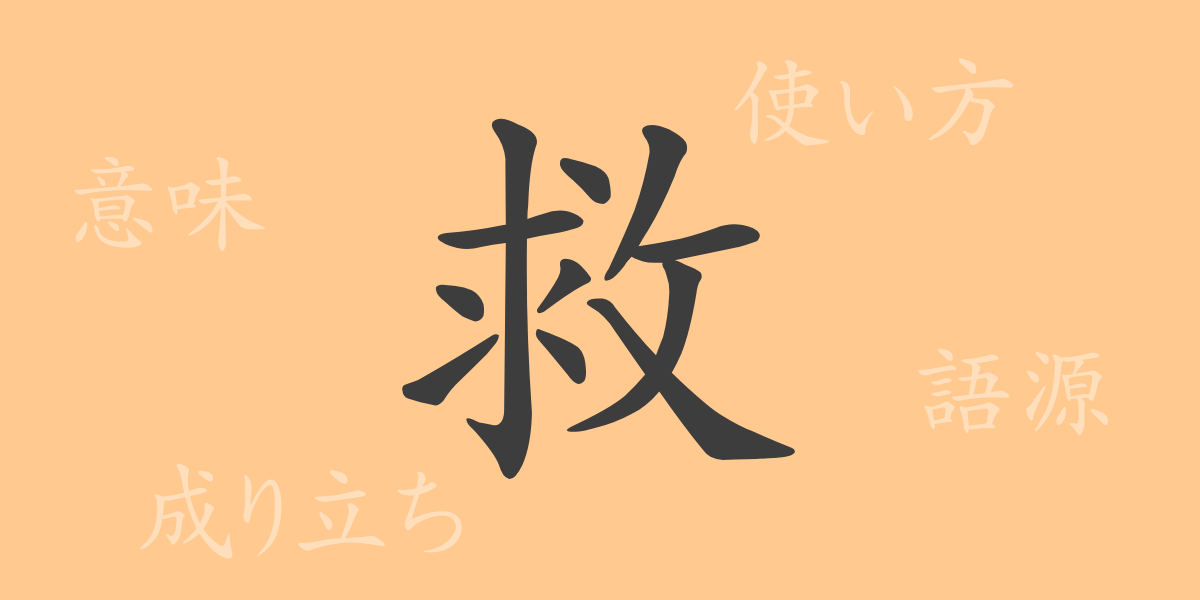The cultural depth of Japanese characters is reflected in the rich meanings and histories behind each kanji. The common kanji “救(きゅう, kyū)” is no exception, and understanding its form and meaning can provide a new appreciation for the richness of the Japanese language. This article delves into the origins, meanings, uses, and the everyday expressions that incorporate “救(きゅう, kyū),” shedding light on its significance in our daily lives.
Origin of 救(きゅう, kyū)
The kanji “救(きゅう, kyū)” is derived from ancient Chinese pictographs. Originally, it depicted a hand (又) lifting water (勹) from a mouth (口), symbolizing the act of rescuing someone from difficulty or danger. Over time, the form evolved into the current “救(きゅう, kyū),” but the core meaning of saving or rescuing remains unchanged.
Meaning and Uses of 救(きゅう, kyū)
The kanji “救(きゅう, kyū)” means “to help,” “to rescue,” or “to save.” It is used to indicate receiving aid or support from an external source during difficult situations. It can refer to both concrete actions, like saving lives, and abstract concepts, like providing relief.
Readings, Stroke Count, and Radical of 救(きゅう, kyū)
The kanji “救(きゅう, kyū)” has specific readings and structural characteristics that have been used in Japan for centuries.
- Readings: The on-yomi (Chinese reading) is “キュウ(きゅう, kyū),” and the kun-yomi (Japanese reading) is “すく.う(suku.u).”
- Stroke count: “救(きゅう, kyū)” has a total of 11 strokes.
- Radical: The radical is 攴(ぼくづくり, bokuzukuri).
Idioms, Proverbs, and Expressions Using 救(きゅう, kyū)
Numerous idioms, proverbs, and expressions in Japanese feature “救(きゅう, kyū),” reflecting its deep-rooted presence in Japanese life and values. Here are a few examples:
- 救急車(きゅうきゅうしゃ, kyūkyūsha): An ambulance used to transport people in need of urgent medical care.
- 救命胴衣(きゅうめいどうい, kyūmeidōi): A life jacket worn to save lives in water emergencies.
- 救済措置(きゅうさいそち, kyūsai sochi): Policies or actions taken to rescue people from economic or social difficulties.
- 火中の栗を拾う(かちゅうのくりをひろう, kachū no kuri o hirou): To take risks to save someone else, literally “picking chestnuts from the fire.”
Summary of 救(きゅう, kyū)
The kanji “救(きゅう, kyū)” holds significant importance beyond its literal meaning. It symbolizes hope and the act of rescuing people from difficulties. This kanji is prevalent in numerous idioms and expressions used in daily life, reflecting a culture of mutual support and empathy. Understanding “救(きゅう, kyū)” allows us to glimpse the cultural value of helping one another embedded in the Japanese language.

























